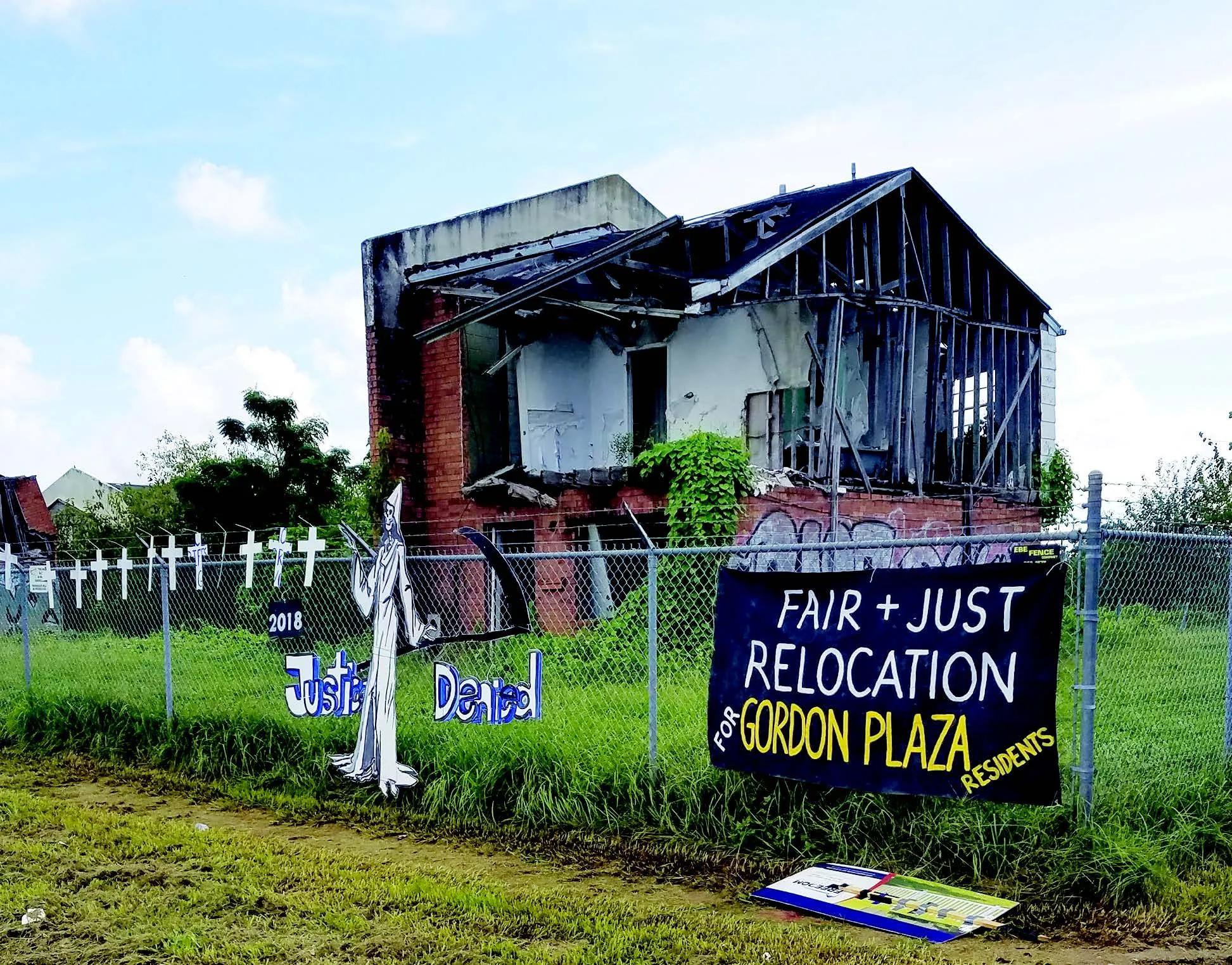
When I tell friends, family, and talkative taxi drivers that I am studying public health and environmental studies, they often respond with a question liberal arts majors are all too familiar with: “What are you going to do with that?” They are generally dissatisfied when I simply respond that I want to help people. When further clarification is needed, I tell them about my research with professor Christopher Oliver and our advocacy work with the residents of Gordon Plaza.
The former Agriculture Street Landfill, located in the Desire neighborhood just off I-10, was one of New Orleans’ primary landfills until it closed in 1966. Nearby communities often complained about the dump, nicknaming it “Dante’s Inferno” due to the frequent fires that raged in the rubbish. After the landfill closed, the city covered it in ash and compacted the land. In 1969, the city of New Orleans built Press Park, a public housing development aimed at giving low income African-Americans the opportunity to become homeowners, next to the landfill. In the late 1970s, the city broke ground on another project only blocks away, Gordon Plaza, with the same intention.
The neighborhoods grew and soon they needed a school, so Moton Elementary School opened its doors in 1986, even though independent tests of the soil indicated abnormally high lead levels at the site. Over the next few years many children began to exhibit signs of lead poisoning, forcing the state and federal authorities to revisit the site’s contamination levels. Eight years later, the Environmental Protection Agency (EPA) declared Agriculture Street Landfill a Superfund Site—a government-designated location that requires environmental remediation—due to elevated levels of hazardous chemicals in the ground and water. The site was placed on the National Priorities List in 1994 after additional testing revealed that the soil was more toxic than previously believed. It was one of the most contaminated Superfund Sites, and while the EPA conducted some remediation, such as removing two feet of soil over ten percent of the neighborhood, it has not been sufficient. Since this remediation, many of the residents have been diagnosed with cancers or other illnesses that have been scientifically linked to the chemicals found at high rates in their neighborhood’s soil. Several residents have passed away, likely due to exposure to these chemicals. Thirty years later, the residents of Gordon Plaza are still fighting for the city to fully fund relocation from their homes atop the former landfill.
My liberal arts education has given me an opportunity to make a difference in people’s lives.
Oliver, a professor of practice in the Department of Sociology and environmental studies at Tulane University, began attending meetings with the residents of Gordon Plaza in the summer of 2016. After that, he started collecting data surrounding the issue from archival sources, the EPA, and the Louisiana Department of Environmental Quality. After the residents of Gordon Plaza filed a new lawsuit against the City of New Orleans, he reached out to the community to see if he could provide any support. Since that time, Oliver has worked with a number of students as well as other local organizations, such as the New Orleans Peoples’ Assembly and professor Molly Mitchell and her students at University of New Orleans, to help provide media exposure so that the public is aware of this four-decade long environmental injustice.
I had no idea that I would be so intimately involved in this effort when I signed up for Oliver’s environmental studies senior seminar course this past fall. He involved students in his work with the residents of Gordon Plaza on every possible occasion—we found ourselves at early morning rallies, mid-afternoon protests, and evening planning meetings. Rather than constrain our education to our weekly meetings, Oliver found ways to teach us how to apply what we learned in the classroom to an important environmental justice issue. Through our relationship with the residents, we were able to mobilize our skills and labor, and put our education to work for the community by attending rallies, archiving data, documenting the movement, and organizing a community forum at Tulane, which drew an audience of more than 200 people.
Oliver’s course enabled me to transfer the knowledge I’ve gained during my four years at Tulane into real-world experience, and it allowed me to be part of an important environmental justice issue and a growing community movement. I met some of the most courageous and resilient people during my visits to Gordon Plaza—people who continue to speak truth to power after more than thirty years of fighting. My liberal arts education has given me an opportunity to make a difference in people’s lives, which is not something every undergraduate student can say. I am humbled to have an opportunity to be a part of the residents of Gordon Plaza’s battle for fully funded relocation.
Gabriella Burns is a senior from Savannah, Georgia. She hopes to pursue a master’s degree in environmental journalism after graduating.

